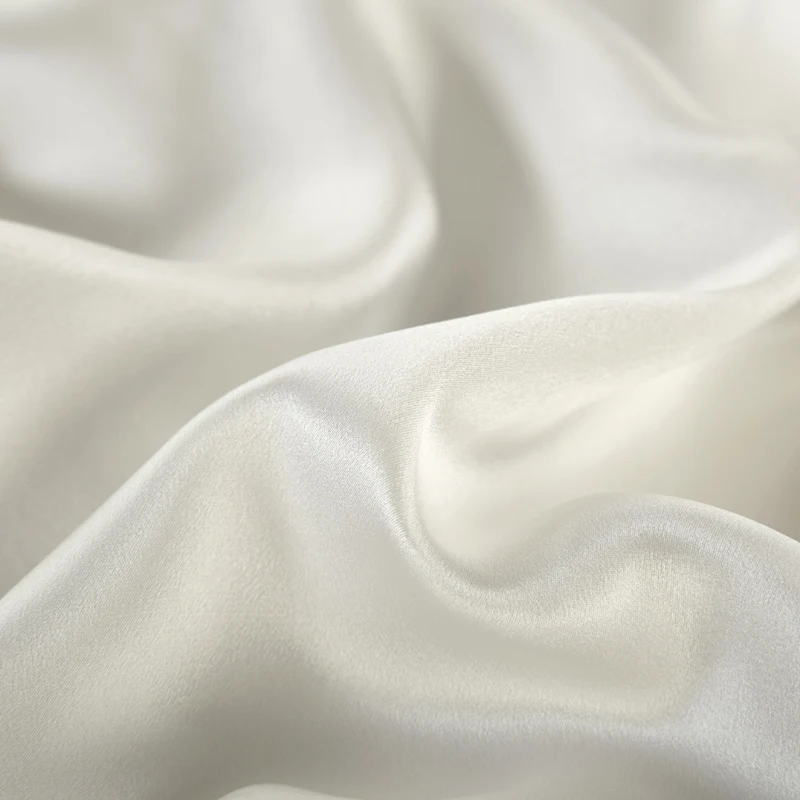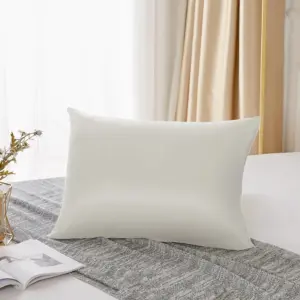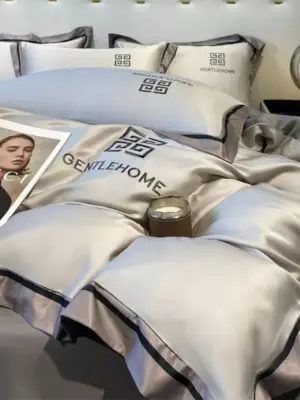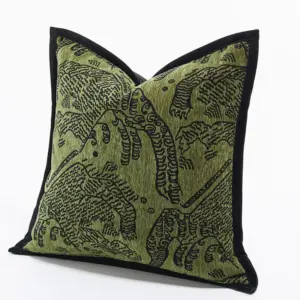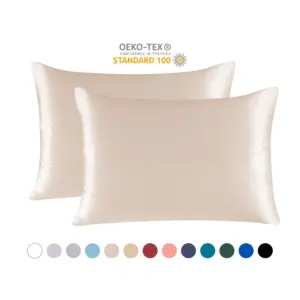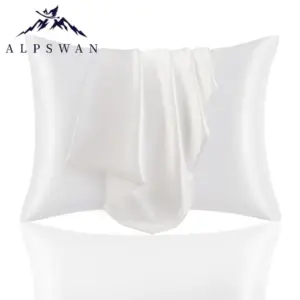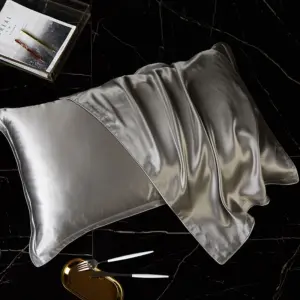The Hidden Damage: How Your Regular Pillowcase Sabotages Hair Health
Every night as you drift off to sleep, an unseen battle wages between your hair and your pillowcase. That standard cotton pillowcase might feel comfortable, but it’s secretly working against your hair’s health in ways you might not realize.
Traditional pillowcase fabrics create significant mechanical stress on hair strands. As you move during sleep—tossing, turning, and adjusting—your hair experiences continuous friction against the rough surface of cotton and other common fabrics. This nightly friction doesn’t just tangle your hair; it actively damages it in several key ways:
- Cotton’s coarse fiber structure catches and snags individual hair strands
- Repetitive movement creates microscopic tears in your hair’s protective cuticle layer
- The rough texture gradually weakens hair, leading to split ends and breakage
- Cotton’s highly absorbent nature strips away natural oils that protect and moisturize hair
What many don’t realize is how comprehensive silk pillowcases are for hair health compared to standard options. The damage from regular pillowcases doesn’t just affect appearance—it compounds over time, leading to increasingly fragile hair.
Morning hair problems like excessive frizz, stubborn tangles, and unusual dryness aren’t simply “bed head”—they’re visible symptoms of the nightly damage occurring while you sleep. Cotton pillowcases can absorb up to 27 times their weight in moisture, literally pulling hydration from your hair throughout the night. This creates the perfect environment for silk versus cotton pillowcases to demonstrate dramatic differences in hair protection.
The Science of Silk: Understanding Its Unique Properties
To understand why silk provides superior hair protection, we need to examine what makes this remarkable material so different from ordinary fabrics.
Natural Composition and Structure
Silk is a natural protein fiber predominantly composed of two proteins: fibroin (the core structural component) and sericin (the sticky outer layer that binds the fibers). This protein-based composition is fundamentally different from plant-based cotton, and significantly, it shares similar amino acid properties with human hair itself.
Under microscopic examination, silk fibers reveal an exceptionally smooth, uniform surface. Unlike cotton’s rough, irregular fibers that resemble twisted ribbons, silk’s molecular structure creates an incredibly even surface with minimal projections that could catch or snag hair strands.
Physical Characteristics for Hair Protection
Silk possesses several unique physical properties that directly benefit hair health:
- Exceptionally low friction coefficient (0.3-0.4 compared to cotton’s 0.5-0.6)
- Limited moisture absorption (absorbs only about 11% of its weight vs. cotton’s 27%)
- Natural temperature regulation that prevents excessive heat damage
- Protein-based structure that’s naturally compatible with hair’s composition
The quality of silk varies significantly, with momme weight serving as the primary indicator. Understanding how to select silk pillowcases by momme weight is crucial—the optimal range of 19-25 momme provides the perfect balance between luxurious softness and durability for hair protection.
These unique properties have made silk a prized material in beauty routines across cultures for centuries. The ancient Chinese, Egyptian, and Roman civilizations all recognized silk’s beneficial qualities for preserving both skin and hair health long before modern science could explain the mechanisms at work.
Mechanism #1: How Silk Minimizes Friction Damage
The primary way silk pillowcases prevent hair breakage is through what experts call the “glide effect”—the almost frictionless surface that allows hair to slide freely without catching or tangling.
When you sleep on silk, your hair strands move across an extraordinarily smooth surface. This significantly reduces the mechanical stress that causes most nighttime hair damage. This friction reduction works on multiple levels:
- Silk’s smooth molecular structure prevents hair strands from catching or snagging
- The minimal surface resistance preserves your hair’s cuticle layer—the protective outer “scales” that shield each strand
- Reduced friction means less tugging and pulling on hair follicles
- The smooth surface maintains hair alignment, preventing the formation of knots and tangles
These benefits are particularly important for those with fragile or damage-prone hair. Our premium silk pillowcases are specifically designed to maximize this friction-reducing property.
The scientific basis for this benefit is measurable. Silk’s coefficient of friction (0.3-0.4) is significantly lower than cotton (0.5-0.6), meaning there’s measurably less resistance as hair moves across the surface. This difference becomes especially important when considering the cumulative effect of thousands of small movements during a typical night’s sleep.
Different hair types benefit from reduced friction in unique ways:
- Fine hair avoids the excessive stress that can lead to breakage
- Curly hair maintains its natural pattern without being disrupted by friction
- Coarse hair experiences less surface resistance that would otherwise cause frizz
- Chemically treated hair receives gentle handling for its already vulnerable structure
Over time, this nightly protection creates a cumulative benefit. Hair that’s not constantly subjected to friction damage has the opportunity to grow stronger and maintain its natural integrity.
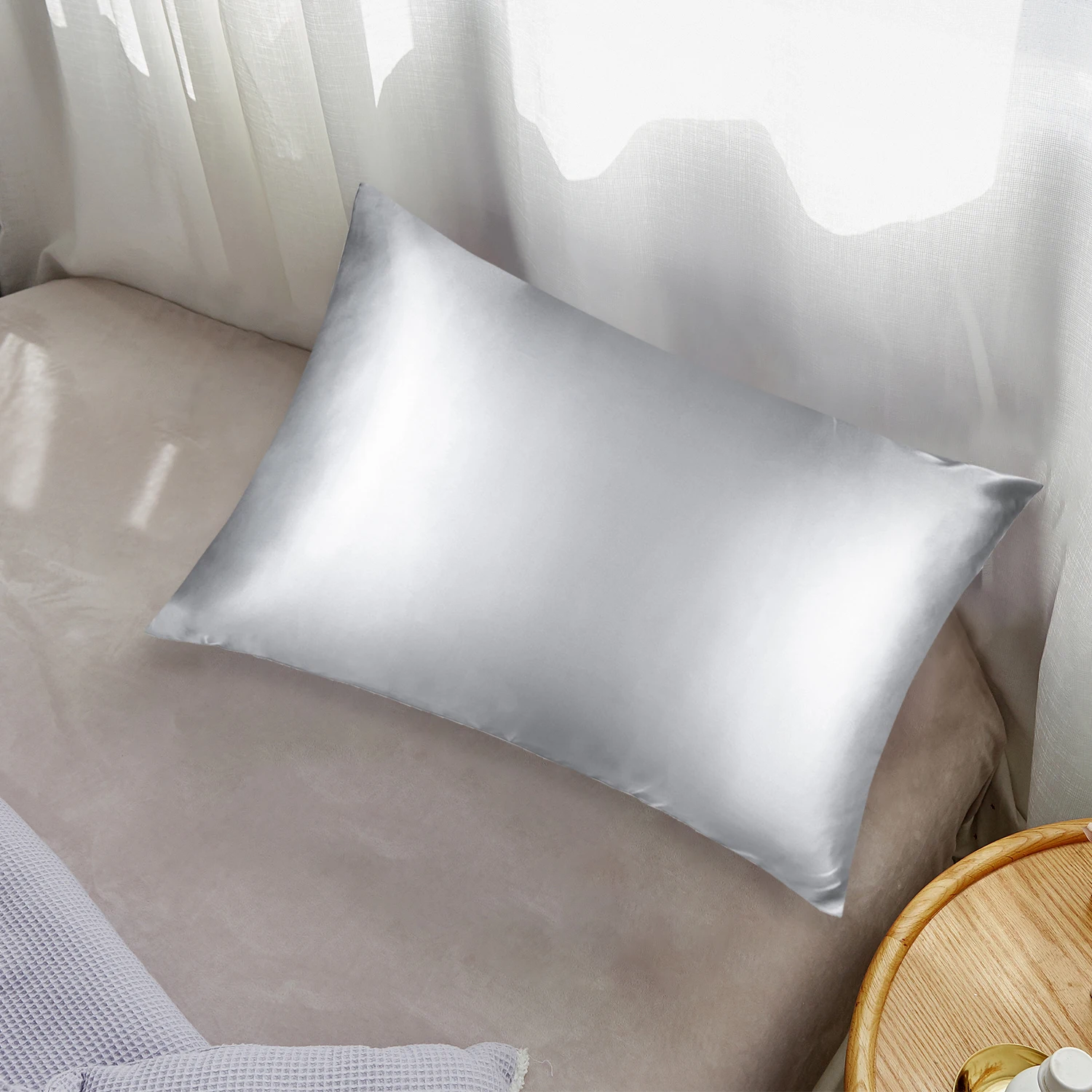
Mechanism #2: Preserving Hair’s Natural Moisture Balance
While friction reduction is immediately noticeable, silk’s moisture-preserving properties may be even more important for long-term hair health.
How Silk Maintains Hair Hydration
Unlike cotton and other absorbent fabrics, silk doesn’t actively pull moisture from your hair while you sleep. This critical difference helps maintain:
- Natural oil distribution along hair shafts
- Proper moisture levels within each strand
- Balanced sebum production from the scalp
- Effectiveness of leave-in hair treatments and products
Your hair’s natural oils (sebum) serve as a protective barrier that maintains elasticity and prevents brittleness. When these oils are preserved rather than absorbed into your pillowcase, your hair remains properly moisturized and significantly less prone to snapping and breaking.
The science behind this benefit relates to silk’s molecular structure. While our high-quality mulberry silk pillowcases do absorb some moisture, they take in significantly less than cotton alternatives—approximately 11% of their weight versus cotton’s 27%. This difference means your hair retains more of its essential moisture throughout the night.
Moisture Balance and Hair Strength
The connection between hydration and hair strength is well-established in trichology (the study of hair and scalp). Properly moisturized hair maintains:
- Optimal protein bonds within each strand
- Greater tensile strength and elasticity
- Resilience against environmental stressors
- Reduced likelihood of splitting or breaking under pressure
When hair becomes excessively dry, its protein structure becomes compromised. The hydrogen bonds that help maintain hair’s shape and integrity weaken, leading to increased brittleness and susceptibility to breakage. By preserving moisture balance, silk pillowcases help maintain these crucial bonds.
Another significant advantage is how silk interacts with hair products. Rather than absorbing expensive conditioning treatments, oils, or serums, silk allows these products to remain on your hair where they belong, maximizing their effectiveness throughout the night.
Visible Results: Beyond Breakage Prevention
While reduced breakage is the primary benefit of silk pillowcases, users typically notice numerous additional improvements in their hair’s overall condition and appearance:
Immediate Benefits
Dramatically reduced frizz and static: Silk doesn’t generate the static electricity that causes flyaways and frizz.
Extended hairstyle longevity: Blowouts, curls, and styled hair maintain their shape significantly longer when sleeping on silk.
Fewer morning tangles: Hair glides across silk rather than catching, resulting in noticeably fewer knots by morning.
Reduced hair creasing: The flexible surface prevents those awkward sleep lines and creases that are difficult to restyle.
Long-Term Improvements
Greater manageability: Hair that’s not constantly battling dryness and damage becomes progressively easier to style.
Enhanced natural shine: As the cuticle layer remains smooth and intact, hair reflects light more effectively, appearing healthier.
Gentler environment for delicate hair: Those with fine, fragile, or chemically treated hair experience less cumulative damage.
Healthier scalp conditions: Many users report improved scalp health due to better regulation of natural oils.
Specific hair types often see distinctive benefits. Those with curly hair particularly benefit from silk pillowcases as curl patterns remain more defined with significantly less frizz. Similarly, understanding all the transformative effects silk provides during sleep can help you maximize these advantages.
Most users report noticeable improvements within the first week of use, while more substantial changes in hair strength and overall condition typically become apparent after 2-4 weeks of consistent use.
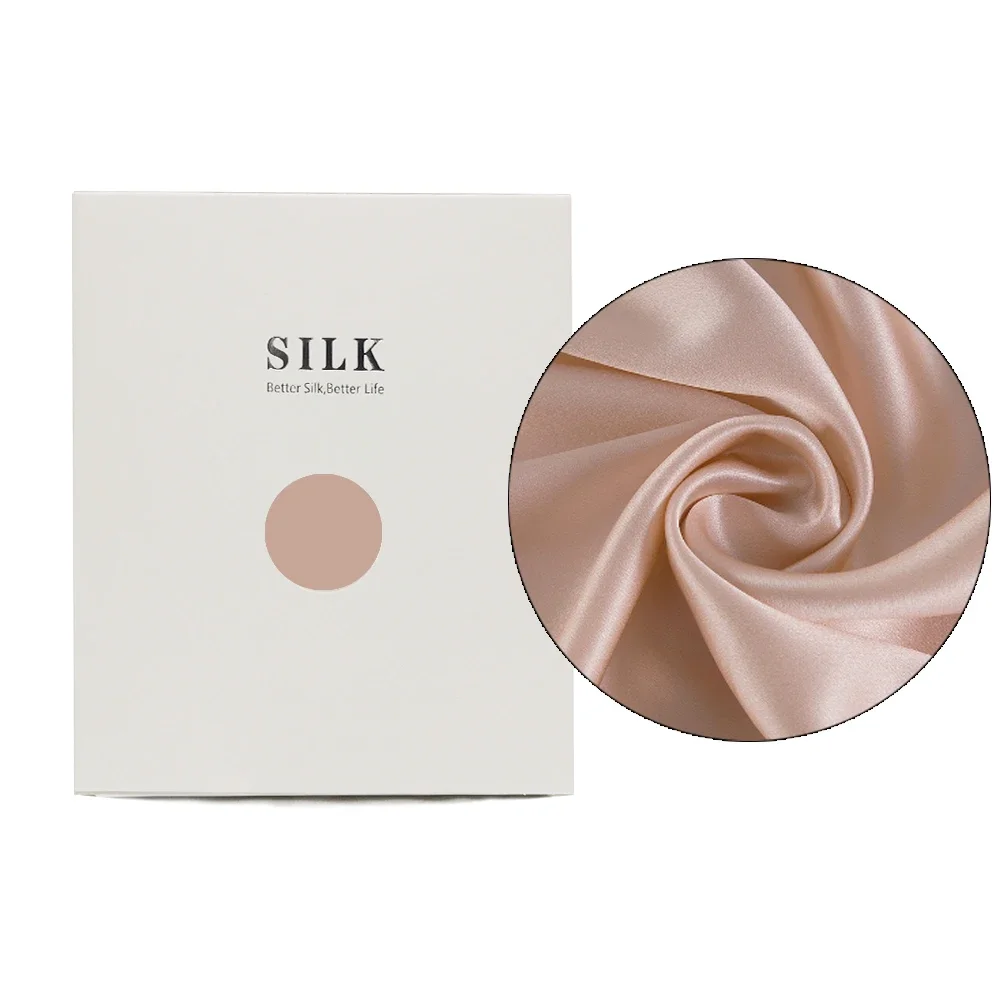
Silk vs. Other Pillowcase Materials: A Hair Health Comparison
Not all pillowcase materials are created equal when it comes to hair protection. This comparison highlights the key differences between common options:
| Material | Friction Level | Moisture Retention | Impact on Hair Cuticles | Best For | Limitations |
|---|---|---|---|---|---|
| Silk | Very Low | High (preserves hair moisture) | Maintains smooth cuticles | All hair types, especially damaged or fragile hair | Higher price point |
| Cotton | High | Poor (absorbs hair moisture) | Roughens cuticles | Budget-friendly options | Causes friction damage and dryness |
| Satin | Low | Moderate | Generally preserves cuticles | Budget alternative to silk | Less breathable, can cause heat buildup |
| Bamboo | Moderate | Moderate absorption | Somewhat rough on cuticles | Eco-conscious consumers | Still creates more friction than silk |
| Linen | High | High absorption | Rough on cuticles | Cooling properties | Significant friction damage |
Silk vs. Cotton: The Critical Difference
The contrast between silk and cotton creates the most dramatic difference in hair health outcomes. Cotton’s plant-based fibers create a rough surface that catches and snags hair, while its high absorbency actively draws moisture from strands. This combination of friction and dehydration makes cotton pillowcases particularly problematic for maintaining hair integrity.
Silk vs. Satin: Natural vs. Synthetic
While satin provides some of silk’s smoothness benefits, important distinctions exist:
- Origin: Silk is a natural protein fiber, while satin is typically made from polyester or nylon
- Breathability: Silk naturally regulates temperature, while synthetic satin can trap heat
- Longevity: Quality silk maintains its benefits longer than synthetic alternatives
- Moisture management: Silk’s protein structure interacts more favorably with hair’s natural oils
Understanding the various pillowcase materials for healthy hair helps make informed decisions based on your specific hair needs and concerns.
Selecting a Quality Silk Pillowcase: Key Features for Maximum Hair Benefits
To get the full hair-protecting benefits of silk, selecting the right pillowcase is essential. Here’s what to look for:
Momme Weight: The Quality Indicator
Momme weight (similar to thread count) measures silk’s density and quality:
- 16-19 momme: Lightweight, less durable but still provides basic benefits
- 19-22 momme: Optimal balance of softness and durability for most users
- 22-25 momme: Premium quality with maximum durability and benefits
- Above 25 momme: Luxury-grade, extremely durable but sometimes less breathable
Material Authenticity
For maximum hair benefits, look for:
- 100% Mulberry silk: The highest quality silk variety with the smoothest fibers
- Avoid blends: Silk/cotton blends reduce the hair-protecting properties
- Charmeuse weave: This specific weave pattern optimizes the smooth surface
Construction Details
Small details make a significant difference:
- Envelope or hidden zipper closures: Prevent hair catching on metal zippers
- French seams: Provide smooth edges that won’t snag hair
- Properly sized: Should fit your pillow snugly to prevent bunching that can catch hair
Our standard-sized silk pillowcases are designed with these optimal construction features specifically to maximize hair protection benefits.
Care Requirements
To maintain silk’s hair benefits:
– Hand wash or use delicate machine cycles
– Use pH-neutral detergents without enzymes
– Air dry away from direct sunlight
– Store in breathable bags when not in use
King Size Silk Pillowcases, Mulberry Silk Pillowcases, Queen Size Silk Pillowcases
Price range: $94.96 through $121.56 Select options This product has multiple variants. The options may be chosen on the product page100% Silk Sheets, Queen Size Silk Fitted Sheet, Queen Size Silk Pillowcases, Queen Size Silk Sheets
Price range: $259.05 through $284.13 Select options This product has multiple variants. The options may be chosen on the product pageQueen Size Silk Pillowcases, Standard Size Silk Pillowcases
Price range: $121.49 through $127.57 Select options This product has multiple variants. The options may be chosen on the product page100% Silk Sheets, Mulberry Silk Pillowcases, Mulberry Silk Sheets
Price range: $105.03 through $121.45 Select options This product has multiple variants. The options may be chosen on the product pageStandard Size Silk Pillowcases
$76.72 Select options This product has multiple variants. The options may be chosen on the product pageMulberry Silk Pillowcases, Standard Size Silk Pillowcases
Price range: $64.60 through $181.26 Select options This product has multiple variants. The options may be chosen on the product page
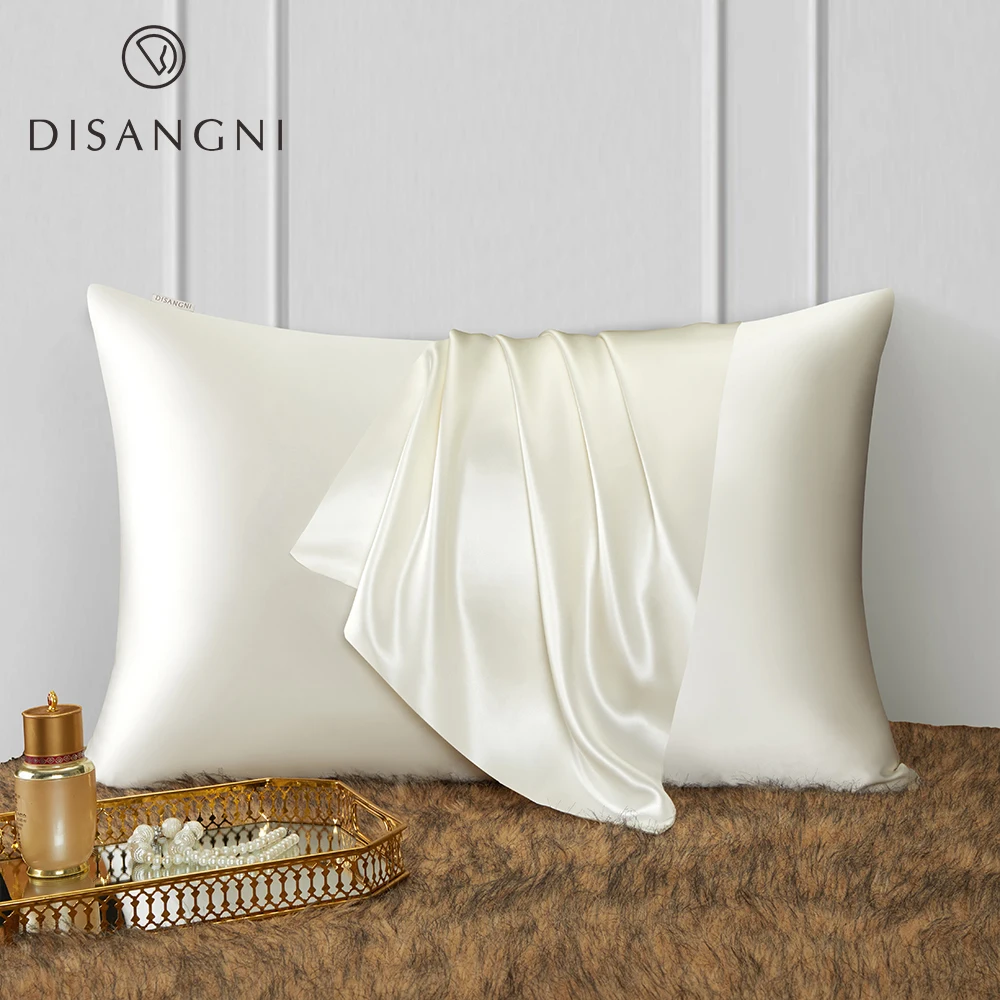
Common Questions: Silk Pillowcases and Hair Health
Do silk pillowcases actually help hair growth?
Silk pillowcases don’t directly stimulate hair growth, but they create optimal conditions for growth by preventing breakage and damage. By reducing friction and maintaining moisture, they allow hair to grow without the interference of damage, which can make it appear that growth is accelerated.
How soon will I notice less breakage with a silk pillowcase?
Most users notice reduced morning tangles and frizz within the first few days. Measurable reduction in breakage typically becomes apparent after 2-3 weeks of consistent use, with more significant improvements developing over 1-2 months as hair has time to recover from previous damage.
Is satin just as good as silk for preventing hair breakage?
While satin provides some friction-reduction benefits similar to silk, it doesn’t offer the same level of moisture preservation. Additionally, being synthetic, satin doesn’t have the natural protein structure that makes silk uniquely compatible with hair. Satin is better than cotton but not equivalent to true silk.
Are silk pillowcases worth the investment for hair health?
For those concerned about hair breakage, dryness, or maintaining styled hair, silk pillowcases typically provide value that justifies their cost. The reduction in damage often means less need for repair products and treatments, while silk’s natural temperature regulation provides additional benefits for both hair and skin.
Do silk pillowcases help with specific hair concerns like thinning or curly hair?
Yes, different hair types receive unique benefits. Thinning hair experiences less stress and breakage, potentially appearing fuller. Curly hair maintains definition and experiences significantly reduced frizz. Color-treated hair retains vibrant color longer due to reduced friction damage to the cuticle layer.
How should I care for my silk pillowcase to maintain its hair benefits?
To preserve silk’s hair-protecting properties, wash using gentle, pH-neutral cleaners, avoid fabric softeners and bleach, air dry or use low heat settings, and store away from direct sunlight. With proper care, a quality silk pillowcase will maintain its benefits for 2-3 years.
Is Silk Worth It? Examining the Investment in Your Hair’s Health
When considering the price difference between standard cotton pillowcases and silk alternatives, many wonder if the benefits justify the investment. Here’s what to consider when making your decision:
Cost vs. Benefit Analysis
Quality silk pillowcases from brands like Sanctuary Soft typically range from $50-$150 depending on momme weight and size. While this represents a higher initial investment than cotton options, several factors offset this cost:
- Reduced need for anti-frizz and repair products
- Extended time between salon treatments for damage control
- Prevention rather than treatment of hair problems
- Properly maintained silk pillowcases last 2-3 years with appropriate care
Long-term Hair Health Perspective
The cumulative protection silk provides ultimately helps maintain healthier hair that:
– Requires less styling product to look good
– Grows longer before breaking
– Retains color and chemical treatments more effectively
– Maintains natural shine and body
For those with already damaged or treated hair, the protective benefits are even more valuable, potentially saving significant amounts on restorative treatments over time.
Alternative Options
For budget-conscious consumers, several approaches can help:
– Start with one silk pillowcase rather than a full set
– Consider high-quality satin as a stepping stone to silk
– Look for seasonal sales or starter sets
– View it as an investment in both hair health and reduced product expenses
When weighing the decision, consider both the immediate improvements in hair manageability and the long-term prevention of damage that would eventually require more costly interventions.

